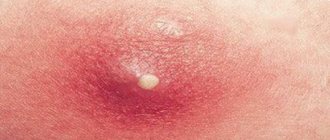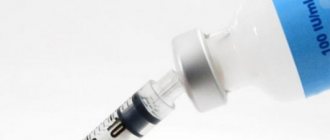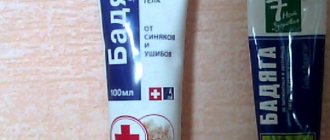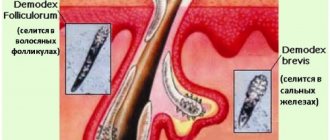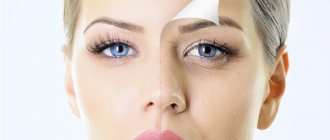Mechanism of formation after peeling
The result of peeling is cleansing of the skin, but at the same time its condition may worsen, acne and inflammation may appear. This deterioration occurs due to a change in skin care routine resulting from accelerated exfoliation. After all, a pimple doesn't start the moment it's visible—it starts as a clogged pore under the surface (a microcomedone) that isn't visible and can eventually become a full-blown pimple before it clears up and disappears. This process may take 8 weeks . And since exfoliation increases the rate at which your skin turns over, it speeds up the entire cycle, which is why you see acne breakouts. However, these are pimples that would have eventually appeared in due time anyway. And while it may seem like your skin is having a negative reaction, that's not always the case.
After some time, it is likely that the skin will adapt and respond positively to the new care.
However, the appearance of acne after peeling may be associated with certain factors, for example:
- Allergic reaction . Acne can be caused by a provoked allergic reaction to one or more components of the drug. It is also important to check the expiration date of the formulations applied to your face. Avoid peeling if this information is not on the package.
- Infection . The skin after peeling is especially sensitive and susceptible to pathogenic factors more than ever, so it becomes very easy to get an infection into the pores. This may be due to a dirty phone, rarely changed pillowcases, and habits such as touching your face with your hands.
- Incorrect care after peeling . Products that are too heavy will clog your pores and this does not prevent acne from appearing. Preference should be given to light textures of creams and care products, and avoid oils with a high comedogenic index.
Why does a rash occur: the main reasons
Often, acne forms after a cosmetologist’s mistake; even a professional is not immune from it.
It is much easier to tolerate incorrect actions at home.
It is necessary to pay due attention to the skin, properly prepare it before peeling; if this is not done, acne will appear. Also, due to the fact that low-quality products are used for the procedure, acne or other problems may occur.
Perhaps this happened due to the individual characteristics of the body:
- It is possible to develop an allergic reaction to the components of the drug.
- These may be hormonal fluctuations that manifest as inflammatory reactions.
- The presence of undiagnosed diseases that manifested themselves after the procedure. Peeling is stressful for the body and skin. This contributes to a decrease in immunity.
- Adolescence, use of contraception, pregnancy, etc. can cause acne and other rashes.
Acne may also appear:
- with incorrectly selected means;
- after an incorrect action by people performing the procedure;
- due to non-compliance with all the recommendations of the cosmetologist.
After salicylic
The appearance of acne due to chemical exposure to the skin due to salicylic peeling is not a rare problem. This method of performing the procedure is considered very aggressive. If you do not follow the rules of the procedure and safety measures, then it is possible to cause enormous harm to the health of the skin. This type of peeling is harsh; there are safer methods of procedure for cleansing the skin.
Salicylic peeling is not recommended for women with sensitive skin.
The appearance of acne after salicylic peeling is a consequence of the fact that the preparation for the procedure was incorrect. This happens if the cosmetologist ignored checking the skin for the presence of demodex mites. There are also contraindications when chronic endocrine diseases are in the acute phase.
We recommend: How to apply Bepanten and other products after facial peeling? Top 10 creams and ointments
After glycolic
Glycolic peeling can cause acne if the patient's skin is affected by demodicosis (this is a subcutaneous mite) or due to an allergic reaction.
After milk
Milk peeling is one of the most gentle methods. Pimples on sensitive skin can form if exposure to lactic acid acts as an allergen. The allergic skin rash should go away within a few days.
After yellow
After yellow peeling (also called retinoic peeling), acne rarely forms. This method of procedure is considered relatively safe and gentle. This procedure affects exclusively the upper layers of the epidermis. Therefore, in most cases, side effects are excluded. They can only occur if you completely ignore the rules that must be followed during the recovery period.
After acid
Fruit acid is irritating to the skin. Consequently, an inflammatory rash can very often appear on the face after an acid peel procedure. In many cases, this problem should go away on its own after a few days. Only if the patient follows all the specialist’s recommendations.
How dangerous is this?
Pimples themselves after peeling do not pose any danger as such, but often the appearance of large lesions can lead to emotional problems, and if squeezed independently and incorrectly, to permanent scars and even death.
There is a part of the face called the “danger triangle” - this is the area between the corners of the mouth and the bridge of the nose, where the sinuses are located nearby, as well as the blood vessels that transport blood to the brain. By squeezing pimples in a dangerous triangle, there is a chance of introducing infection into nearby blood vessels. In this case, the veins passing behind the eye sockets can form a blood clot containing infection. This clot affects the brain and can lead to paralysis or even death.
This condition is called cavernous sinus thrombosis and kills 30% of people affected.
What to do to get rid of the red rash?
If inflammation appears after peeling, then certain actions should be taken. They will contribute to the speedy restoration of the epithelium and help quickly get rid of the problem. It is also recommended to take into account mistakes that were made and led to bad consequences.
After the first signs of inflammation are detected, you should immediately seek help from a doctor. A qualified dermatologist or cosmetologist will help solve this problem.
The first signs are:
- When some areas of the skin began to change color. They can either lighten or darken.
- The entire skin of the face will turn red-violet.
- If a capillary network appears and becomes visible.
You should not self-medicate. Only an experienced specialist will correctly diagnose and prescribe the correct treatment. Self-medication is dangerous, it can be dangerous and have disastrous consequences. By taking the wrong actions, it is easy to compromise the health of the skin.
We recommend: Effective restoration of facial skin after peeling. Review of the best products
You should definitely take into account the advice of a cosmetologist. It is possible that this is just a recovery period. Therefore, it will just take a little time to pass. In many cases, after a few days the skin takes on a healthy appearance on its own. The epidermis will return to order on its own only if you follow the recommendations.
Experts will draw up a list of actions necessary when acne appears. This is a whole complex of various procedures specifically aimed at the epithelium, affecting it comprehensively. The main thing here is to take into account the characteristics of the body, the cosmetics that were used, as well as the type of peeling. Then the treatment regimen will be drawn up correctly.
How to get rid of it?
Acne that appears after peeling must be treated. One study found that if a person has acne for three years and it is not treated properly, it will result in scarring on the face.
Scars that appear after acne
There are many ways to get rid of acne:
- The best ingredients used to treat acne are benzoyl peroxide and salicylic acid . Benzoyl peroxide helps kill bacteria inside the pore. This reduces infection, redness and inflammation, but sometimes causes negative reactions such as dryness and burning. Always start with a lower concentration (such as 2.5% benzoyl peroxide lotion) to test the skin's reaction. Salicylic acid is another active ingredient that helps remove excess sebum and bacteria contained within the pores. It can cause redness and dryness, especially on sensitive skin. Start with a product containing 0.5 to 3% salicylic acid. You can also use creams and ointments with the main active ingredients in the form of sulfur or zinc compounds with the addition of concentrated vitamin A.
- Antihistamines . If acne is caused by an allergy to the peeling components, then their treatment should be accompanied by taking antihistamines.
- Spot care with tea tree oil . Acne responds well to tea tree oil, which is used around the world as an antiseptic, fights bacteria and heals wounds. To make a simple home remedy for acne, add 4-8 drops to one teaspoon of coconut oil or jojoba oil. Should be applied locally to acne.
- Taking a course of probiotics . Live probiotics support proper digestion and immune system function, and improve skin health by fighting acne.
- Moisturizing with Aloe Vera . When applied to the skin, Aloe Vera gel can heal wounds, burns and fight inflammation. The plant also contains salicylic acid and sulfur, which are widely used in the treatment of acne. The gel is applied directly to the skin as a moisturizer.
Read more about choosing an acne remedy here
When treating acne, it is important to consider that one method that clears one person's skin may not help another due to individual characteristics.
In what cases can peeling help?
Exfoliation has many benefits, correcting, improving and keeping the skin healthy, beautiful and glowing. However, different people will have individual results. Some significant benefits of peeling include:
- Softens and reduces the appearance of fine lines and wrinkles (under the eyes and around the mouth). For this purpose, a light (superficial) peeling is used to remove the outer layer of skin (epidermis).
- Reduce wrinkles caused by sun damage and aging. This involves peeling the middle layers of the skin, removing epidermal cells and part of the middle layer of skin (dermis).
- Improves the appearance of soft scars and acne scars.
- Treatment of certain types of acne. Dermatologists offer peeling as part of a comprehensive acne treatment program. The treatment is done in conjunction with taking certain prescribed acne medications, reducing the skin's production of excess oil as well as exfoliating the surface layers of the skin. This reduces the buildup of bacteria and dead skin cells in the pores, leading to inflammation and pimples.
- Reduces age spots, freckles and dark spots (melasma). The constant process of exfoliation allows new skin cells to come to the surface, eliminating excess pigmentation.
- Improving the quality, texture of the skin and increasing its tone.
It is worth keeping in mind that the results of peeling may not be permanent. During natural aging, new wrinkles will begin to appear and the sun will cause further damage, causing changes in skin color.
Recommendations for pre-peel preparation
The successful outcome of facial peeling largely depends not only on the procedure itself, but also on competent actions before and after cleansing.
The likelihood of a positive completion of the cleansing cosmetic action will be much higher if you contact a cosmetologist who has been tested by time and positive reviews from other clients.
Strictly follow the specialist's instructions for preparing the skin for peeling.
You should not engage in amateur activities and do experiments, because the face is, as a rule, the first thing people pay attention to
You cannot blame the unprofessionalism of a cosmetologist if you did not listen to the advice of peeling experts and chose the wrong season for a cosmetic procedure. It is undesirable to do some types of peeling during the hot season; it is better to shift the schedule of the cleansing procedure to another period.
Prevention
The occurrence of acne, caused by accelerated renewal of the epidermis after the peeling procedure, can be prevented as follows:
- Sleep at least 7-8 hours . It supports the immune system at its best and reduces stress levels, which directly affects the occurrence of acne.
- Regular exercise . It's a great way to control stress, and exercise also increases blood circulation and delivers important nutrients to the skin. But after playing sports, be sure to take a shower. Sweat can clog pores.
- Reduce carbohydrate intake . Carbohydrates cause an increase in glucose and insulin levels, this surge stimulates the appearance of acne.
- Correct skin cleansing system . Washing your face twice a day – morning and evening – is enough to remove bacteria. Frequent washing can lead to dryness and irritation. However, using hot water with hard brushes is not the best option.
- Moderate amount of makeup . The fewer products you apply to your skin, the better. Use cosmetics and sunscreens labeled “oil free,” “water-based,” or “non-comedogenic.” It is important to completely remove makeup before going to bed.
Other methods of preventing acne that are not caused by the process of cleansing the skin after peeling include:
- Analysis of peeling ingredients to determine possible allergens.
- Limiting face contact with hands or other objects, such as a phone.
- Selection of the right facial care according to skin type and condition.
Expected Side Effects
Peeling is an effective way to transform the skin in a short period of time. Exposing the skin to chemicals, lasers, ultrasound, or other factors removes dead cells from the skin. This process stimulates active renewal of the integument, accelerates the division of skin cells and the synthesis of its own collagen.
After peeling, the skin looks refreshed and healthy for a reason. Dead cells accumulate over time, grouping into keratinized layers, and prevent the skin from breathing and the supply of nutritional components from skincare products. These difficulties affect the condition of the integument, slow down the functioning of cells and reduce their resistance to environmental factors.
In the hope of an instant transformation, after peeling, redness and peeling appear on the face. How to react to such troubles?
Among the expected side effects from the effect on the skin, cosmetologists identified:
- development of erythema or severe redness of the epidermis;
- mild to moderate swelling;
- peeling of the surface layers of the skin;
- local darkening of skin areas;
- increasing the sensitivity of areas subject to peeling.
Let's look at the predicted complications from peeling in more detail.
Erythema
Redness of the area of skin that was peeled is called erythema. Its intensity depends on the aggressiveness of the active exfoliant, the duration of its effect and the sensitivity of the skin.
Superficial peels using fruit acids cause mild and transient redness that will last several hours. But for the Jessner cleansing procedure, the effect will be more pronounced and last up to two days.
For those who dare to undergo moderate acid exfoliations, where the concentration of active acid exceeds 30%, you should prepare for severe erythema for 3-5 days. If we talk about deep cleansing and dermabrasion, then you will observe the “purple face” effect for a longer period of time, perhaps even up to 1 month.
Edema
Swelling is another common side effect of chemical or mechanical effects on the sensitive fibers of the epidermis. Swelling is caused by an increase in the permeability of small blood vessels located in the treated area. The fluid released from them accumulates and provokes swelling. Often, swelling is characteristic of sensitive areas on the face, such as the periorbital area or neck.
Swelling does not appear immediately, but 1–3 days after exfoliation. This defect is typical for exfoliation with trichloroacetic acid (TCA) or medium retinoic peeling.
Peeling
Any peeling is accompanied by peeling - this is the main sign of skin renewal. The more intense the regeneration and the larger the area that has been cleansed, the stronger the peeling. For chemical peels, peeling is considered a mandatory post-peeling phenomenon.
The peeling of the epidermis resembles how the skin peels off after a strong tan in the sun. It is accompanied by itching, but scratching, scrubbing, or tearing off loose films from the face is strictly prohibited.
During the period of active peeling, you can speed up the process of tissue restoration. To do this, use cosmetics with wound-healing and moisturizing properties recommended by a cosmetologist.
Darkening of the skin
Complications after chemical peeling in the form of darkened skin areas on the face sometimes cause great concern among patients. However, there is no reason to worry. This is how the areas of the skin that were exposed to the exfoliant are expressed. These are old epidermal cells, they will go away when exfoliated. On average, the complete exfoliation process takes 7–12 days.
Hypersensitivity of the integument
After peeling, many patients complain of increased sensitivity and soreness in the treated area. After peeling, the skin reacts sensitively to cold and heat when washing, and may ache when applying cosmetics. Hypersensitivity of the skin is individual; it can end in 1–2 weeks, and in some cases lasts up to a year.
Reducing the skin barrier during exfoliation significantly reduces the protection of soft tissues from external factors and increases their sensitivity. At the same time, resistance to ultraviolet exposure decreases. That is why cosmetologists strongly recommend applying sunscreen when going outside and performing peelings in late autumn and winter until the epidermis is completely restored. During this period, solar activity subsides, and there is less risk of injury to weakened integuments.

